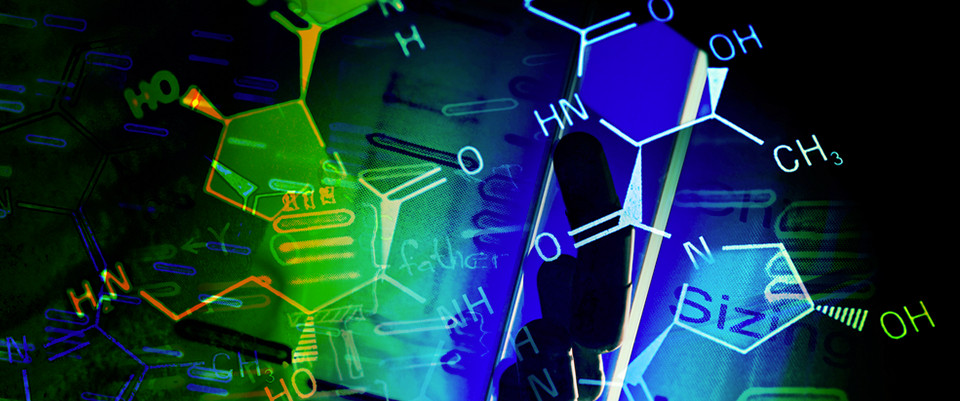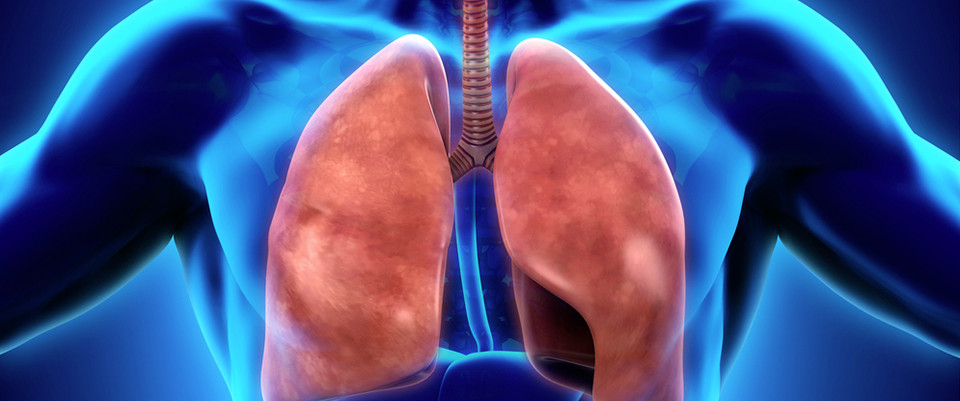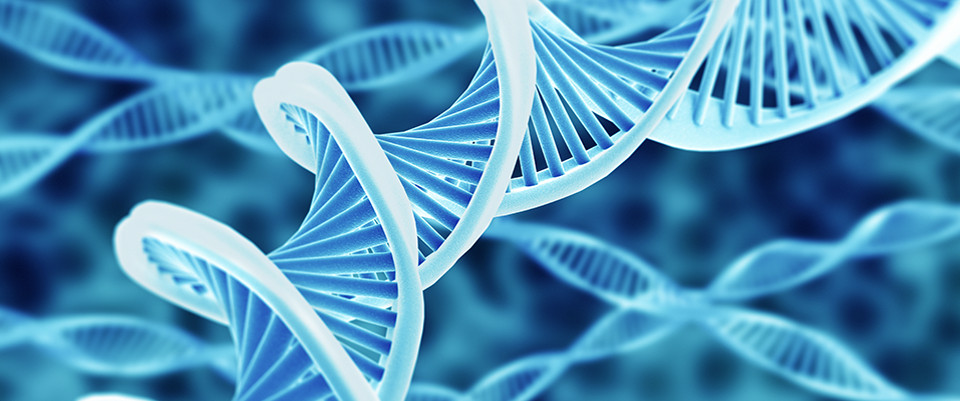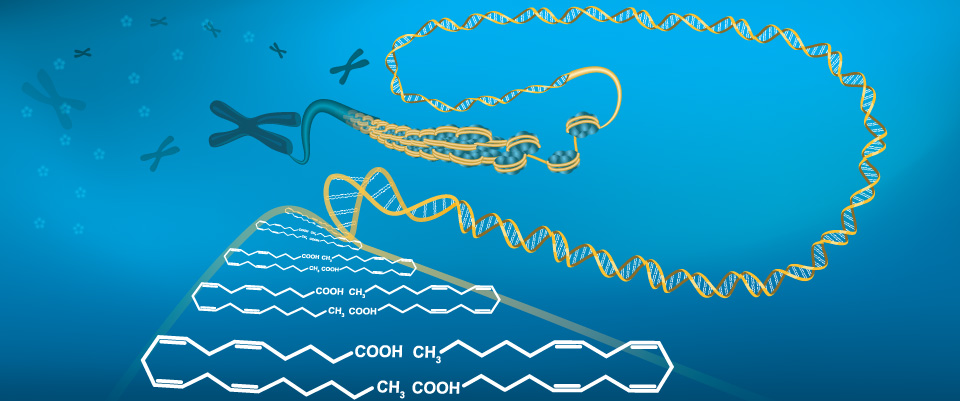PubMed
Molecular insights into quality and authentication of sheep meat from proteomics and metabolomics
J Proteomics. 2023 Feb 8:104836. doi: 10.1016/j.jprot.2023.104836. Online ahead of print.ABSTRACTSheep meat (encompassing lamb, hogget and mutton) is an important source of animal protein in many countries, with a unique flavour and sensory profile compared to other red meats. Flavour, colour and texture are the key quality attributes contributing to consumer liking of sheep meat. Over the last decades, various factors from 'farm to fork', including production system (e.g., age, breed, feeding regimes, sex, pre-slaughter stress, and carcass suspension), post-mortem manipulation and processing (e.g., electrical stimulation, ageing, packaging types, and chilled and frozen storage) have been identified as influencing different aspects of sheep meat quality. However conventional meat-quality assessment tools are not able to elucidate the underlying mechanisms and pathways for quality variations. Advances in broad-based analytical techniques have offered opportunities to obtain deeper insights into the molecular changes of sheep meat which may become biomarkers for specific variations in quality traits and meat authenticity. This review provides an overview on how omics techniques, especially proteomics (including peptidomics) and metabolomics (including lipidomics and volatilomics) are applied to elucidate the variations in sheep meat quality, mainly in loin muscles, focusing on colour, texture and flavour, and as tools for authentication. SIGNIFICANCE: From this review, we observed that attempts have been made to utilise proteomics and metabolomics techniques on sheep meat products for elucidating pathways of quality variations due to various factors. For instance, the improvement of colour stability and tenderness could be associated with the changes to glycolysis, energy metabolism and endogenous antioxidant capacity. Several studies identify proteolysis as being important, but potentially conflicting for quality as the enhanced proteolysis improves tenderness and flavour, while reducing colour stability. The use of multiple analytical methods e.g., lipidomics, metabolomics, and volatilomics, detects a wider range of flavour precursors (including both water and lipid soluble compounds) that underlie the possible pathways for sheep meat flavour evolution. The technological advancement in omics (e.g., direct analysis-mass spectrometry) could make analysis of the proteins, lipids and metabolites in sheep meat routine, as well as enhance the confidence in quality determination and molecular-based assurance of meat authenticity.PMID:36764652 | DOI:10.1016/j.jprot.2023.104836
Metabolomic investigation of major depressive disorder identifies a potentially causal association with polyunsaturated fatty acids
Biol Psychiatry. 2023 Feb 8:S0006-3223(23)00055-0. doi: 10.1016/j.biopsych.2023.01.027. Online ahead of print.ABSTRACTBACKGROUND: Metabolic differences have been reported between individuals with and without Major Depressive Disorder (MDD), but their consistency and causal relevance has been unclear.METHODS: We conducted a metabolome-wide association study of MDD with 249 metabolomic measures available in UK Biobank (N = 29, 757). We then applied 2-sample bidirectional Mendelian Randomisation (MR) and colocalization analysis to identify potentially causal relationships between each metabolite and MDD.RESULTS: One hundred and ninety-one metabolites tested were significantly associated with MDD (PFDR < 0.05), which reduced to 129 after adjustment for likely confounders. Lower abundance of Omega-3 fatty acid measures and a higher Omega-6: Omega-3 ratio showed potentially causal effects on liability to MDD. There was no evidence of a causal effect of MDD on metabolite levels. Furthermore, genetic signals associated with Docosahexaenoic Acid colocalized with loci associated with MDD within the FADS gene cluster. Post-hoc MR of gene-transcript abundance within the FADS cluster demonstrated a causal association with MDD. In contrast, colocalization analysis did not suggest a single causal variant for both transcript abundance and MDD liability, but the likely existence of two variants in LD with one another.CONCLUSION: Our findings suggest that decreased Docosahexaenoic Acid and increased Omega-6: Omega-3 fatty acids ratio may be causally related to MDD. These findings provide further support for the causal involvement of fatty acids in MDD.PMID:36764567 | DOI:10.1016/j.biopsych.2023.01.027
Dysregulation of the microbiota-brain axis during long-term exposure to polystyrene nanoplastics in rats and the protective role of dihydrocaffeic acid
Sci Total Environ. 2023 Feb 8:162101. doi: 10.1016/j.scitotenv.2023.162101. Online ahead of print.ABSTRACTPolystyrene nano-plastics (PS-NPs) can be accumulated in the food chain and can penetrate biological barriers to affect multiple physiological functions. However, the adverse effects of nano-plastics on mammals and the underlying mechanism still remain unknown. To fill the gaps, our study administrated low-dose PS-NPs (50 and 100 μg/L) for 24 consecutive weeks in rats. Behavioral and morphological evaluations were performed to assess the neurobehavoirs. A combined analysis of multiple omics was used to evaluate the dysfunctions of the gut-microbe-brain axis. After dihydrochalcone(NHDC) treatment in the PS-NPs rat model, the inflammation response and apoptosis process were assessed and proteomics was used to explore the underlying mechanism. Our results indicated that long-term exposure to low-dose PS-NPs could induce abnormal neurobehaviors and amygdaloid nucleus impairment, and stimulate inflammatory responses and apoptosis. Metagenomics results revealed that four microbial phyla including Proteobacteria, Firmicutes, Defferibacteres, and Bacteroidetes changed significantly compared to the control. Targeted metabolomics analysis in the feces showed alteration of 122 metabolites induced by the PS-NPs exposure, among which the content of dihydrocaffeic acid was significantly associated with the different microbial genera and pivotal differential metabolites in the amygdaloid nucleus. And NHDC treatment significantly alleviated PS-NP-induced neuroinflammation and apoptosis and the cyclic adenosine monophosphate(cAMP)/protein kinase A(PKA)/phosphorylated cAMP-response element binding protein(p-CREB)/plasma membrane calcium-transporting ATPase 2(Atp2b2) signaling pathway was identified in the proteomics. In conclusion, long-term exposure to low-dose PS-NPs has adverse effects on emotion through the dysregulation of the gut-brain axis, and dihydrocaffeic acid can alleviate these effects via the cAMP/PKA/p-CREB/Atp2b2 signaling pathway.PMID:36764550 | DOI:10.1016/j.scitotenv.2023.162101
Norgestrel causes digestive gland injury in the clam Mactra veneriformis: An integrated histological, transcriptomics, and metabolomics study
Sci Total Environ. 2023 Feb 8:162110. doi: 10.1016/j.scitotenv.2023.162110. Online ahead of print.ABSTRACTThe potential adverse effects of progestins on aquatic organisms, especially non-target species, are of increasing concern worldwide. However, the effect and mechanism of progestin toxicity on aquatic invertebrates remain largely unexplored. In the present study, clams Mactra veneriformis were exposed to norgestrel (NGT, 0, 10, and 1000 ng/L), the dominant progestin detected in the aquatic environment, for 21 days. NGT accumulation, histology, transcriptome, and metabolome were assessed in the digestive gland. The bioconcentration factor (BCF) was 386 and 268 in the 10 ng/L NGT group and 1000 ng/L NGT group, respectively, indicating efficient accumulation of NGT in the clams. Histological analysis showed that NGT led to the swelling of epithelial cells and blurring of the basement membrane in the digestive gland. Differentially-expressed genes and KEGG pathway enrichment analysis using a transcriptomic approach suggested that NGT primarily disturbed the detoxification system, antioxidant defense, carbohydrate and amino acid metabolism, and steroid hormone metabolism, which was consistent with the metabolites analyzed using a metabolomic approach. Furthermore, we speculated that the oxidative stress caused by NGT resulted in histological damage to the digestive gland. This study showed that NGT caused adverse effects in the clams and sheds light on the mechanisms of progestin interference in aquatic invertebrates.PMID:36764532 | DOI:10.1016/j.scitotenv.2023.162110
Untargeted LC-HRMS metabolomics reveals candidate biomarkers for mucopolysaccharidoses
Clin Chim Acta. 2023 Feb 8:117250. doi: 10.1016/j.cca.2023.117250. Online ahead of print.ABSTRACTBACKGROUND: Mucopolysaccharidoses (MPSs) are inherited genetic diseases caused by an absence or deficiency of lysosomal enzymes responsible for catabolizing glycosaminoglycans (GAGs). Undiagnosed patients, or those without adequate treatment in early life, can be severely and irreversibly affected by the disease. In this study, we applied liquid chromatography-high resolution mass spectrometry (LC-HRMS)-based untargeted metabolomics to identify potential biomarkers for MPS disorders to better understand how MPS may affect the metabolome of patients.METHODS: Urine samples from 37 MPS patients (types I, II, III, IV, and VI; untreated and treated with enzyme replacement therapy (ERT)) and 38 controls were analyzed by LC-HRMS. Data were processed by an untargeted metabolomics workflow and submitted to multivariate statistical analyses to reveal significant differences between the MPS and control groups.RESULTS: A total of 12 upregulated metabolites common to all MPS types were identified. Dipeptides, amino acids and derivatives were upregulated in the MPS group compared to controls. N-acetylgalactosamines 4- or 6-sulfate, important constituents of GAGs, were also elevated in MPS patients, most prominently in those with MPS VI. Notably, treated patients exhibited lower levels of the aforementioned acylaminosugars than untreated patients in all MPS types.CONCLUSIONS: Untargeted metabolomics has enabled the detection of metabolites that could improve our understanding of MPS physiopathology. These potential biomarkers can be utilized in screening methods to support diagnosis and ERT monitoring.PMID:36764508 | DOI:10.1016/j.cca.2023.117250
Similarities on the mode of action of the terpenoids citral and farnesene in Arabidopsis seedlings involve interactions with DNA binding proteins
Plant Physiol Biochem. 2023 Feb 4;196:507-519. doi: 10.1016/j.plaphy.2023.02.004. Online ahead of print.ABSTRACTThe sesquiterpene farnesene and the monoterpene citral are phytotoxic natural compounds characterized by a high similarity in macroscopic effects, suggesting an equal or similar mechanism of action when assayed at IC50 concentration. In the present study, a short-time experiment (24 and 48 h) using an imaging spectrofluorometer allowed us to monitor the in-vivo effects of the two molecules, highlighting that both terpenoids were similarly affecting all PSII parameters, even when the effects of citral were quicker in appearing than those of farnesene. The multivariate, univariate, and pathway analyses, carried out on untargeted-metabolomic data, confirmed a clear separation of the plant metabolome in response to the two treatments, whereas similarity in the affected pathways was observed. The main metabolites affected were amino acids and polyamine, which significantly accumulated in response to both treatments. On the contrary, a reduction in sugar content (i.e. glucose and sucrose) was observed. Finally, the in-silico studies demonstrated a similar mechanism of action for both molecules by interacting with DNA binding proteins, although differences concerning the affinity with the proteins with which they could potentially interact were also highlighted. Despite the similarities in macroscopic effects of these two molecules, the metabolomic and in-silico data suggest that both terpenoids share a similar but not equal mechanism of action and that the similar effects observed on the photosynthetic machinery are more imputable to a side effect of molecules-induced oxidative stress.PMID:36764266 | DOI:10.1016/j.plaphy.2023.02.004
Associated long-term effects of decabromodiphenyl ethane on the gut microbial profiles and metabolic homeostasis in Sprague-Dawley rat offspring
Environ Int. 2023 Feb 4;172:107802. doi: 10.1016/j.envint.2023.107802. Online ahead of print.ABSTRACTDecabromodiphenyl ethane (DBDPE) as a widely used brominated flame retardant is harmful to human health due to its toxicity, including cardiovascular toxicity, reproductive toxicity, and hepatotoxicity. However, the knowledge of the long-term effects and structural and metabolic function influence on gut microbiota from DBDPE exposure remains limited. This study was mainly aimed at the gut microbiome and fecal metabolome of female rats and their offspring exposed to DBDPE in early life. 16S rRNA gene sequencing demonstrated that maternal DBDPE exposure could increase the α-diversity of gut microbiota in immature offspring while decreasing the abundance of Bifidobacterium, Clostridium, Muribaculum, Escherichia, and Lactobacillus in adult offspring. The nonmetric multidimensional scaling showed a consistency in the alternation of β-diversity between pregnant rats and their adult offspring. Furthermore, the short-chain fatty acids produced by gut microbiota dramatically increased in adult offspring after maternal DBDPE exposure, revealing that DBDPE treatment disrupted the gut microbial compositions and altered the gut community's metabolic functions. Untargeted metabolomics identified 41 differential metabolites and seven metabolic pathways between adult offspring from various groups. Targeted metabolomic showed that maternal high dose DBDPE exposure obviously decreased the level of glutathione, taurine, and l-carnitine in their adult offspring, which verified the correlation between weight loss and amino acid metabolites. An interesting link between some gut bacteria (especially the Firmicutes) and fecal metabolites demonstrated the shifts in gut microbiota may drive the metabolic process of fecal metabolites. The current findings provide new insight into long-term effects on human health.PMID:36764182 | DOI:10.1016/j.envint.2023.107802
Improved colonic inflammation by nervonic acid via inhibition of NF-κB signaling pathway of DSS-induced colitis mice
Phytomedicine. 2023 Feb 4;112:154702. doi: 10.1016/j.phymed.2023.154702. Online ahead of print.ABSTRACTBACKGROUND: Nervonic acid (C24:1∆15, 24:1 ω-9, cis-tetracos-15-enoic acid; NA), a long-chain monounsaturated fatty acid, plays an essential role in prevention of metabolic diseases, and immune regulation, and has anti-inflammatory properties. As a chronic, immune-mediated inflammatory disease, ulcerative colitis (UC) can affect the large intestine. The influences of NA on UC are largely unknown.PURPOSE: The present study aimed to decipher the anti-UC effect of NA in the mouse colitis model. Specifically, we wanted to explore whether NA can regulate the levels of inflammatory factors in RAW264.7 cells and mouse colitis model.METHODS: To address the above issues, the RAW264.7 cell inflammation model was established by lipopolysaccharide (LPS), then the inflammatory factors tumor necrosis factor-α (TNF-α), Interleukin-6 (IL-6), Interleukin-1β (IL-1β), and Interleukin-10 (IL-10) were detected by Enzyme-linked immunosorbent assay (ELISA). The therapeutic effects of NA for UC were evaluated using C57BL/6 mice gavaged dextran sodium sulfate (DSS). Hematoxylin and eosin (H&E) staining, Myeloperoxidase (MPO) kit assay, ELISA, immunofluorescence assay, and LC-MS/MS were used to assess histological changes, MPO levels, inflammatory factors release, expression and distribution of intestinal tight junction (TJ) protein ZO-1, and metabolic pathways, respectively. The levels of proteins involved in the nuclear factor kappa-B (NF-κB) pathway in the UC were investigated by western blotting and RT-qPCR.RESULTS: In vitro experiments verified that NA could reduce inflammatory response and inhibit the activation of key signal pathways associated with inflammation in LPS-induced RAW264.7 cells. Further, results from the mouse colitis model suggested that NA could restore intestinal barrier function and suppress NF-κB signal pathways to ameliorate DSS-induced colitis. In addition, untargeted metabolomics analysis of NA protection against UC found that NA protected mice from colitis by regulating citrate cycle, amino acid metabolism, pyrimidine and purine metabolism.CONCLUSION: These results suggested that NA could ameliorate the secretion of inflammatory factors, suppress the NF-κB signaling pathway, and protect the integrity of colon tissue, thereby having a novel role in prevention or treatment therapy for UC. This work for the first time indicated that NA might be a potential functional food ingredient for preventing and treating inflammatory bowel disease (IBD).PMID:36764096 | DOI:10.1016/j.phymed.2023.154702
Proteome Coverage after Simultaneous Proteo-Metabolome Liquid-Liquid Extraction
J Proteome Res. 2023 Feb 10. doi: 10.1021/acs.jproteome.2c00758. Online ahead of print.ABSTRACTProteomics and metabolomics are essential in systems biology, and simultaneous proteo-metabolome liquid-liquid extraction (SPM-LLE) allows isolation of the metabolome and proteome from the same sample. Since the proteome is present as a pellet in SPM-LLE, it must be solubilized for quantitative proteomics. Solubilization and proteome extraction are critical factors in the information obtained at the proteome level. In this study, we investigated the performance of two surfactants (sodium deoxycholate (SDC), sodium dodecyl sulfate (SDS)) and urea in terms of proteome coverage and extraction efficiency of an interphase proteome pellet generated by methanol-chloroform based SPM-LLE. We also investigated how the performance differs when the proteome is extracted from the interphase pellet or by direct cell lysis. We quantified 12 lipids covering triglycerides and various phospholipid classes, and 25 polar metabolites covering central energy metabolism in chloroform and methanol extracts. Our study reveals that the proteome coverages between the two surfactants and urea for the SPM-LLE interphase pellet were similar, but the extraction efficiencies differed significantly. While SDS led to enrichment of basic proteins, which were mainly ribosomal and ribonuclear proteins, urea was the most efficient extraction agent for simultaneous proteo-metabolome analysis. The results of our study also show that the performance of surfactants for quantitative proteomics is better when the proteome is extracted through direct cell lysis rather than an interphase pellet. In contrast, the performance of urea for quantitative proteomics was significantly better when the proteome was extracted from an interphase pellet than by direct cell lysis. We demonstrated that urea is superior to surfactants for proteome extraction from SPM-LLE interphase pellets, with a particularly good performance for the extraction of proteins associated with metabolic pathways. Data are available via ProteomeXchange with identifier PXD027338.PMID:36763818 | DOI:10.1021/acs.jproteome.2c00758
DRP1 mutations associated with EMPF1 encephalopathy alter mitochondrial membrane potential and metabolic programs
J Cell Sci. 2023 Feb 1;136(3):jcs260370. doi: 10.1242/jcs.260370. Epub 2023 Feb 10.ABSTRACTMitochondria and peroxisomes are dynamic signaling organelles that constantly undergo fission, driven by the large GTPase dynamin-related protein 1 (DRP1; encoded by DNM1L). Patients with de novo heterozygous missense mutations in DNM1L present with encephalopathy due to defective mitochondrial and peroxisomal fission (EMPF1) - a devastating neurodevelopmental disease with no effective treatment. To interrogate the mechanisms by which DRP1 mutations cause cellular dysfunction, we used human-derived fibroblasts from patients who present with EMPF1. In addition to elongated mitochondrial morphology and lack of fission, patient cells display lower coupling efficiency, increased proton leak and upregulation of glycolysis. Mitochondrial hyperfusion also results in aberrant cristae structure and hyperpolarized mitochondrial membrane potential. Peroxisomes show a severely elongated morphology in patient cells, which is associated with reduced respiration when cells are reliant on fatty acid oxidation. Metabolomic analyses revealed impaired methionine cycle and synthesis of pyrimidine nucleotides. Our study provides insight into the role of mitochondrial dynamics in cristae maintenance and the metabolic capacity of the cell, as well as the disease mechanism underlying EMPF1.PMID:36763487 | DOI:10.1242/jcs.260370
Effects of Host Plants on Development and Immunity of a Generalist Insect Herbivore
J Chem Ecol. 2023 Feb 10. doi: 10.1007/s10886-023-01410-9. Online ahead of print.ABSTRACTSecondary plant chemistry mediates a variety of communication signals among species, playing a fundamental role in the evolutionary diversification of communities and ecosystems. Herein, we explored diet-mediated host plant effects on development and immune response of a generalist insect herbivore. Vanessa cardui (Nymphalidae) caterpillars were reared on leaves of three host plants that vary in secondary metabolites, Plantago lanceolata (Plantaginaceae), Taraxacum officinale (Asteraceae) and Tithonia diversifolia (Asteraceae). Insect development was evaluated by larval and pupal viabilities, survivorship, and development rate. Immune response was measured as phenoloxidase (PO) activity. Additionally, chemical profiles of the host plants were obtained by liquid chromatograph-mass spectrometry (LC-MS) and the discriminant metabolites were determined using a metabolomic approach. Caterpillars reared on P. lanceolata exhibited the highest larval and pupal viabilities, as well as PO activity, and P. lanceolata leaves were chemically characterized by the presence of iridoid glycosides, phenylpropanoids and flavonoids. Taraxacum officinale leaves were characterized mainly by the presence of phenylpropanoids, flavones O-glycoside and germacranolide-type sesquiterpene lactones; caterpillars reared on this host plant fully developed to the adult stage, however they exhibited lower larval and pupal viabilities compared to individuals reared on P. lanceolata. Conversely, caterpillars reared on T. diversifolia leaves, which contain phenylpropanoids, flavones and diverse furanoheliangolide-type sesquiterpene lactones, were not able to complete larval development and exhibited the lowest PO activity. These findings suggested that V. cardui have adapted to tolerate potentially toxic metabolites occurring in P. lanceolata (iridoid glycosides), however caterpillars were not able to cope with potentially detrimental metabolites occurring in T. diversifolia (furanoheliangolides). Therefore, we suggest that furanoheliangolide-type sesquiterpene lactones were responsible for the poor development and immune response observed for caterpillars reared on T. diversifolia.PMID:36763248 | DOI:10.1007/s10886-023-01410-9
Metabolic characterization and GAPDH dependent regulation of ENaC in hPheo1 wild-type and SDHB knockdown cells
Endocrinology. 2023 Feb 10:bqad026. doi: 10.1210/endocr/bqad026. Online ahead of print.ABSTRACTPheochromocytomas (PCC) and paragangliomas (PGL) are rare neuroendocrine tumors with limited curative treatment options outside of surgical resection. Patients with mutations in succinate dehydrogenase subunit B (SDHB) are at an increased risk of malignant and aggressive disease. As cation channels are associated with tumorigenesis, we studied the expression and activity of cation channels from the Degenerin superfamily in a progenitor cell line derived from a human PCC. hPheo1 wild-type (WT) and SDHB knockdown (KD) cells were studied to investigate whether epithelial sodium channels (ENaC) and acid-sensing ion channels (ASIC) are regulated by the activity of glyceraldehyde-3-phosphate dehydrogenase (GAPDH). First, we performed targeted metabolomic studies and quantified changes in glycolysis pathway intermediates and citric acid cycle intermediates using hPheo1 WT cells and SDHB KD cells. Next, we performed protein biochemistry and electrophysiology studies to characterize the protein expression and activity, respectively, of these ion channels. Our western blot experiments show both ENaC alpha and ASIC1/2 are expressed in both hPheo1 WT and SDHB KD cells, with lower levels of a cleaved 60kDa form of ENaC in SDHB KD cells. Single-channel patch clamp studies corroborate these results and further indicate channel activity is decreased in SDHB KD cells. Additional experiments showed a more significant decreased membrane potential in SDHB KD cells which were sensitive to amiloride compared to WT cells. We provide evidence for the differential expression and activity of ENaC and ASIC hybrid channels in hPheo1 WT and SDHB KD cells providing an important area of investigation in understanding SDHB-related disease.PMID:36763043 | DOI:10.1210/endocr/bqad026
Molecular Signatures of the Eagle Effect Induced by the Artificial Siderophore Conjugate LP-600 in <em>E. coli</em>
ACS Infect Dis. 2023 Feb 10. doi: 10.1021/acsinfecdis.2c00567. Online ahead of print.ABSTRACTAchieving cellular uptake is a central challenge for novel antibiotics targeting Gram-negative bacterial pathogens. One strategy is to hijack the bacterial iron transport system by siderophore-antibiotic conjugates that are actively imported into the cell. This was realized with the MECAM-ampicillin conjugate LP-600 we recently reported that was highly active against E. coli. In the present study, we investigate a paradoxical regrowth of E. coli upon treatment of LP-600 at concentrations 16-32 times above the minimum inhibitory concentration (MIC). The phenomenon, coined "Eagle-effect" in other systems, was not due to resistance formation, and it occurred for the siderophore conjugate but not for free ampicillin. To investigate the molecular imprint of the Eagle effect, a combined transcriptome and untargeted metabolome analysis was conducted. LP-600 induced the expression of genes involved in iron acquisition, SOS response, and the e14 prophage upon regrowth conditions. The Eagle effect was diminished in the presence of sulbactam, which we ascribe to a putative synergistic antibiotic action but not to β-lactamase inhibition. The study highlights the relevance of the Eagle effect for siderophore conjugates. Through the first systematic -omics investigations, it also demonstrates that the Eagle effect manifests not only in a paradoxical growth but also in unique gene expression and metabolite profiles.PMID:36763039 | DOI:10.1021/acsinfecdis.2c00567
Excessive growth hormone promotes joint degeneration and chondrocyte metabolic dysfunction in mice
Arthritis Rheumatol. 2023 Feb 10. doi: 10.1002/art.42470. Online ahead of print.ABSTRACTOBJECTIVE: Many patients with acromegaly, a hormonal disorder with excessive growth hormone (GH), report pain in joints. The objective of this study is to characterize the joint pathology of mice with over-expression of either bovine GH (bGH) or a GH receptor antagonist (GHa). We also investigate the effect of GH on regulation of chondrocyte cellular metabolism.METHODS: Knee joints from mice over-expressing bGH or GHa and WT were histologically and μCT analyzed for OA pathologies. Additionally, cartilage from bGH mice was used for metabolomics. Mouse primary chondrocytes from WT or bGH mice with or without Pegvisomant (Peg) treatment were used for Q-PCR and Seahorse Respirometry analysis.RESULTS: Both male and female bGH mice at ~13 months had increased knee joint degeneration, which is characterized by loss of cartilage structure, expansion of hypertrophic chondrocytes, synovitis, and subchondral plate thinning. The joint pathologies were also demonstrated by significantly higher OARSI and Mankin scores in bGH compared with WT mice. Metabolomics revealed changes of a wide range of metabolic pathways in bGH mice including beta-alanine metabolism, tryptophan metabolism, lysine degradation, and ascorbate and aldarate metabolism. Also, bGH chondrocytes upregulated fatty acid oxidation (FAO) and increased expression of Col10a. Joints of GHa mice are remarkably protected from developing age-associated joint degeneration with smooth articular joint surface.CONCLUSIONS: These studies uncover that an excessive amount of GH promotes joint degeneration in mice, whereas antagonizing GH action through a GHa protects mice from OA development, which is associated with chondrocyte metabolic dysfunction and hypertrophic changes.PMID:36762426 | DOI:10.1002/art.42470
Innovation in identifying metabolites from complex metabolome-Highlights of recent analytical platforms and protocols
Front Chem. 2023 Jan 25;11:1129717. doi: 10.3389/fchem.2023.1129717. eCollection 2023.ABSTRACTMetabolites are closely intertwined genotypes that can provide clear information about the final phenotype. The high-throughput analysis platform used to identify candidate metabolites and describe their contributions can help to quickly detect metabolic characteristics from large spectral data, which may lead to peak data preprocessing, statistical analysis and functional interpretation. Developing a comprehensive strategy for discovering and verifying bioactive metabolites can provide a large number of new functional biomarkers, and then more closely reveal their functional changes, which has relevant biological significance for disease diagnosis and prognosis treatment.PMID:36762198 | PMC:PMC9905695 | DOI:10.3389/fchem.2023.1129717
Uracil restores susceptibility of methicillin-resistant <em>Staphylococcus aureus</em> to aminoglycosides through metabolic reprogramming
Front Pharmacol. 2023 Jan 24;14:1133685. doi: 10.3389/fphar.2023.1133685. eCollection 2023.ABSTRACTBackground: Methicillin-resistant Staphylococcus aureus (MRSA) has now become a major nosocomial pathogen bacteria and resistant to many antibiotics. Therefore, Development of novel approaches to combat the disease is especially important. The present study aimed to provide a novel approach involving the use of nucleotide-mediated metabolic reprogramming to tackle intractable methicillin-resistant S. aureus (MRSA) infections. Objective: This study aims to explore the bacterial effects and mechanism of uracil and gentamicin in S. aureus. Methods: Antibiotic bactericidal assays was used to determine the synergistic bactericidal effect of uracil and gentamicin. How did uracil regulate bacterial metabolism including the tricarboxylic acid (TCA) cycle by GC-MS-based metabolomics. Next, genes and activity of key enzymes in the TCA cycle, PMF, and intracellular aminoglycosides were measured. Finally, bacterial respiration, reactive oxygen species (ROS), and ATP levels were also assayed in this study. Results: In the present study, we found that uracil could synergize with aminoglycosides to kill MRSA (USA300) by 400-fold. Reprogramming metabolomics displayed uracil reprogrammed bacterial metabolism, especially enhanced the TCA cycle to elevate NADH production and proton motive force, thereby promoting the uptake of antibiotics. Furthermore, uracil increased cellular respiration and ATP production, resulting the generation of ROS. Thus, the combined activity of uracil and antibiotics induced bacterial death. Inhibition of the TCA cycle or ROS production could attenuate bactericidal efficiency. Moreover, uracil exhibited bactericidal activity in cooperation with aminoglycosides against other pathogenic bacteria. In a mouse mode of MRSA infection, the combination of gentamicin and uracil increased the survival rate of infected mice. Conclusion: Our results suggest that uracil enhances the activity of bactericidal antibiotics to kill Gram-positive bacteria by modulating bacterial metabolism.PMID:36762116 | PMC:PMC9902350 | DOI:10.3389/fphar.2023.1133685
Integrating strategies of metabolomics, network pharmacology, and experiment validation to investigate the processing mechanism of Epimedium fried with suet oil to warm kidney and enhance yang
Front Pharmacol. 2023 Jan 25;14:1113213. doi: 10.3389/fphar.2023.1113213. eCollection 2023.ABSTRACTIntroduction: Epimedium, a traditional Chinese medicine (TCM) commonly used in ancient and modern China, is one of the traditional Chinese medicines clinically used to treat kidney yang deficiency syndrome (KYDS). There are differences in the efficacy of Epimedium before and after processing, and the effect of warming the kidney and enhancing yang is significantly enhanced after heating with suet oil. However, the active compounds, corresponding targets, metabolic pathways, and synergistic mechanism of frying Epimedium in suet oil to promote yang, remain unclear. Methods: Herein, a strategy based on comprehensive GC-TOF/MS metabolomics and network pharmacology analysis was used to construct an "active compounds-targets-metabolic pathways" network to identify the active compounds, targets and metabolic pathways involved. Subsequently, the targets in kidney tissue were further validated by real-time quantitative polymerase chain reaction (RT-qPCR). Histopathological analysis with physical and biochemical parameters were performed. Results: Fifteen biomarkers from urine and plasma, involving five known metabolic pathways related to kidney yang deficiency were screened. The network pharmacology results showed 37 active compounds (13 from Epimedium and 24 from suet oil), 159 targets, and 267 pathways with significant correlation. Importantly, integrated metabolomics and network pharmacologic analysis revealed 13 active compounds (nine from Epimedium and four from suet oil), 7 corresponding targets (ALDH2, ARG2, GSTA3, GSTM1, GSTM2, HPGDS, and NOS2), two metabolic pathways (glutathione metabolism, arginine and proline metabolism), and two biomarkers (Ornithine and 5-Oxoproline) associated with improved kidney yang deficiency by Epimedium fried with suet oil. Discussion: These finds may elucidate the underlying mechanism of yang enhancement via kidney warming effects. Our study indicated that the mechanism of action mainly involved oxidative stress and amino acid metabolism. Here, we demonstrated the novel strategies of integrating metabolomics and network pharmacology in exploring of the mechanisms of traditional Chinese medicines.PMID:36762111 | PMC:PMC9905240 | DOI:10.3389/fphar.2023.1113213
Effects of electroacupuncture on urinary metabolome and microbiota in presenilin1/2 conditional double knockout mice
Front Microbiol. 2023 Jan 24;13:1047121. doi: 10.3389/fmicb.2022.1047121. eCollection 2022.ABSTRACTAIM: The treatment of Alzheimer's disease (AD) is still a worldwide problem due to the unclear pathogenesis and lack of effective therapeutic targets. In recent years, metabolomic and gut microbiome changes in patients with AD have received increasing attention, and the microbiome-gut-brain (MGB) axis has been proposed as a new hypothesis for its etiology. Considering that electroacupuncture (EA) efficiently moderates cognitive deficits in AD and its mechanisms remain poorly understood, especially regarding its effects on the gut microbiota, we performed urinary metabolomic and microbial community profiling on EA-treated AD model mice, presenilin 1/2 conditional double knockout (PS cDKO) mice, to observe the effect of EA treatment on the gut microbiota in AD and find the connection between affected gut microbiota and metabolites.MATERIALS AND METHODS: After 30 days of EA treatment, the recognition memory ability of PS cDKO mice was evaluated by the Y maze and the novel object recognition task. Urinary metabolomic profiling was conducted with the untargeted GC-MS method, and 16S rRNA sequence analysis was applied to analyze the microbial community. In addition, the association between differential urinary metabolites and gut microbiota was clarified by Spearman's correlation coefficient analysis.KEY FINDINGS: In addition to reversed cognitive deficits, the urinary metabolome and gut microbiota of PS cDKO mice were altered as a result of EA treatment. Notably, the increased level of isovalerylglycine and the decreased levels of glycine and threonic acid in the urine of PS cDKO mice were reversed by EA treatment, which is involved in glyoxylate and dicarboxylate metabolism, as well as glycine, serine, and threonine metabolism. In addition to significantly enhancing the diversity and richness of the microbial community, EA treatment significantly increased the abundance of the genus Mucispirillum, while displaying no remarkable effect on the other major altered gut microbiota in PS cDKO mice, norank_f_Muribaculaceae, Lactobacillus, and Lachnospiraceae_NK4A136 group. There was a significant correlation between differential urinary metabolites and differential gut microbiota.SIGNIFICANCE: Electroacupuncture alleviates cognitive deficits in AD by modulating gut microbiota and metabolites. Mucispirillum might play an important role in the underlying mechanism of EA treatment. Our study provides a reference for future treatment of AD from the MGB axis.PMID:36762099 | PMC:PMC9904445 | DOI:10.3389/fmicb.2022.1047121
The roles and mechanisms of gut microbiome and metabolome in patients with cerebral infarction
Front Cell Infect Microbiol. 2023 Jan 25;13:1112148. doi: 10.3389/fcimb.2023.1112148. eCollection 2023.ABSTRACTAs the most common type of stroke, ischemic stroke, also known as cerebral infarction (CI), with its high mortality and disability rate, has placed a huge burden on social economy and public health. Treatment methods for CI mainly include thrombectomy, thrombolysis, drug therapy, and so on. However, these treatments have certain timeliness and different side effects. In recent years, the gut-brain axis has become a hot topic, and its role in nervous system diseases has been confirmed by increasing evidences. The intestinal microbiota, as an important part of the gut-brain axis, has a non-negligible impact on the progression of CI through mechanisms such as inflammatory response and damage-associated molecular patterns, and changes in the composition of intestinal microbiota can also serve as the basis for predicting CI. At the same time, the diagnosis of CI requires more high-throughput techniques, and the analysis method of metabolomics just fits this demand. This paper reviewed the changes of intestinal microbiota in patients within CI and the effects of the intestinal microbiota on the course of CI, and summarized the therapeutic methods of the intervention with the intestinal microbiota. Furthermore, metabolic changes of CI patients were also discussed to reveal the molecular characteristics of CI and to elucidate the potential pathologic pathway of its interference.PMID:36761896 | PMC:PMC9905239 | DOI:10.3389/fcimb.2023.1112148
Metabolomics analysis of an AAA-ATPase Cdc48-deficient yeast strain
Heliyon. 2023 Jan 24;9(2):e13219. doi: 10.1016/j.heliyon.2023.e13219. eCollection 2023 Feb.ABSTRACTThe ubiquitin-specific chaperone AAA-ATPase Cdc48 and its orthologs p97/valosin-containing protein (VCP) in mammals play crucial roles in regulating numerous intracellular pathways via segregase activity, which separates polyubiquitinated targets from membranes or binding partners. Interestingly, high-throughput experiments show that a vast number of metabolic enzymes are modified with ubiquitin. Therefore, Cdc48 may regulate metabolic pathways, for example by acting on the polyubiquitin chains of metabolic enzymes; however, the role of Cdc48 in metabolic regulation remains largely unknown. To begin to analyze the role of Cdc48 in metabolic regulation in yeast, we performed a metabolomics analysis of temperature-sensitive cdc48-3 mutant cells. We found that the amount of metabolites in the glycolytic pathway was altered. Moreover, the pool of nucleotides, as well as the levels of metabolites involved in the tricarboxylic acid cycle and oxidative phosphorylation, increased, whereas the pool of amino acids decreased. These results suggest the involvement of Cdc48 in metabolic regulation in yeast. In addition, because of the roles of p97/VCP in regulating multiple cellular pathways, its inhibition is being considered as a promising anticancer drug target. We propose that the metabolomics study of Cdc48-deficient yeast will be useful as a complement to p97/VCP-related pathological and therapeutic studies.PMID:36761826 | PMC:PMC9905943 | DOI:10.1016/j.heliyon.2023.e13219











